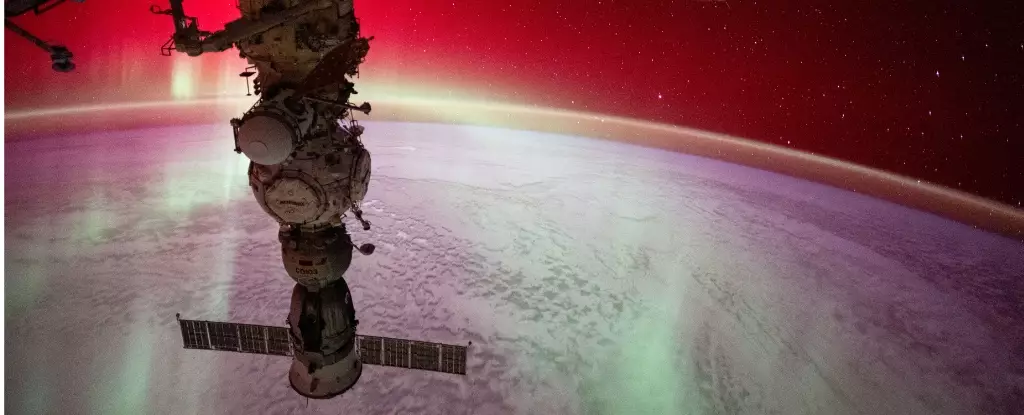The marvels of space have long captivated humanity, and the International Space Station (ISS) offers a unique vantage point from which to admire the beauty of our planet. Every year, astronauts aboard the ISS create some of the most breathtaking photographs ever captured, showcasing everything from stunning natural phenomena to vivid reminders of Earth’s fragility. This article delves into the significance of such imagery, the technical skills of the astronauts behind the lens, and the profound experiences they undergo while orbiting the blue planet.
Astronauts are not just trained engineers and scientists; many are also adept photographers. This combination of technical proficiency and artistic vision allows them to immortalize their journey through the cosmos. This year, like every year, the ISS was the stage for incredible photographic ventures. Astronauts shot hundreds of images, driven by an innate desire to share their unique experiences with the world. As NASA astronaut Matt Dominick noted, the breathtaking views present an irresistible opportunity to connect with humanity. Capturing these marvels becomes an act of storytelling, taking us on a shared journey that transcends distance and time.
Marvels Above: Comets and Auroras
2024 has been particularly spectacular, with the appearance of Comet Tsuchinshan-ATLAS, providing astronauts with a front-row seat to cosmic events that evoke awe and curiosity. The northern lights, or aurora borealis, also paint the night sky in vibrant colors, observable from the unique high vantage point of the ISS. These awe-inspiring occurrences serve not only as a feast for the eyes but also as scientific opportunities, prompting questions about the universe and our planet’s atmospheric conditions.
Astronauts have the privilege of witnessing natural wonders like colorful sunsets and rare atmospheric phenomena such as noctilucent clouds. According to Dominick, however, the photographs can hardly capture the full spectrum of what the human eye perceives. Despite advancements in technology, the indescribable beauty of such views continues to elude the capabilities of any camera, emphasizing the unique nature of the astronaut experience.
Not all images captured from the ISS are picturesque. The perspective from space reveals stark realities, offering profound insights into the impact of climate change and natural disasters. Astronauts can observe phenomena such as wildfires and hurricanes that can stretch for hundreds of miles, presenting a sobering view of our world. For instance, hurricanes like Helene and Milton can be seen as monstrous storms pulsating with power, dominating vast areas below. Lightning strikes illuminate stormy clouds, adding to the dramatic imagery of our planet’s weather patterns.
This duality of beauty and tragedy enhances the astronauts’ connection to Earth, fostering a sense of responsibility towards our shared home. The Overview Effect, described by many astronauts, highlights this dramatic shift in perspective when they view the Earth from space. As they gaze down upon the planet, a profound sense of unity and appreciation for life’s fragility emerges.
The Human Experience in Space
The emotional impact of space travel manifests distinctly among astronauts. William Shatner’s reflections on his own spaceflight illustrate the mental shifts that accompany such profound experiences. For astronauts like Suni Williams, this altered perspective fosters an overwhelmingly hopeful vision for humanity. After months aboard the ISS, she expressed how being in space transforms one’s worldview, allowing for a deeper understanding of human connection.
Challenges in space, such as long durations away from Earth and unexpected delays—like those faced by Williams and her crewmate, Butch Wilmore—are met with resilience and optimism. Their narrative showcases not only the technical aspects of space travel but also the very human experiences tied to their missions. They regard the ISS as their “happy place,” finding solace and purpose in their long journey.
The Future of the Space Station
As we look ahead, the ISS faces an uncertain future. Set to retire in 2030, NASA has begun preparations for a graceful exit, planning a secure descent into the Pacific Ocean. This bittersweet transition emphasizes the need to reflect upon the legacy of the ISS. Not only has the space station served as a platform for awe-inspiring photography, but it also represents decades of scientific achievement and international collaboration.
As we anticipate the next chapter in space exploration, the stunning images and stories forged in the heart of the cosmos will continue to inspire generations. The legacy of the ISS lives on, reminding humanity that the universe holds endless possibilities waiting to be explored.


Leave a Reply